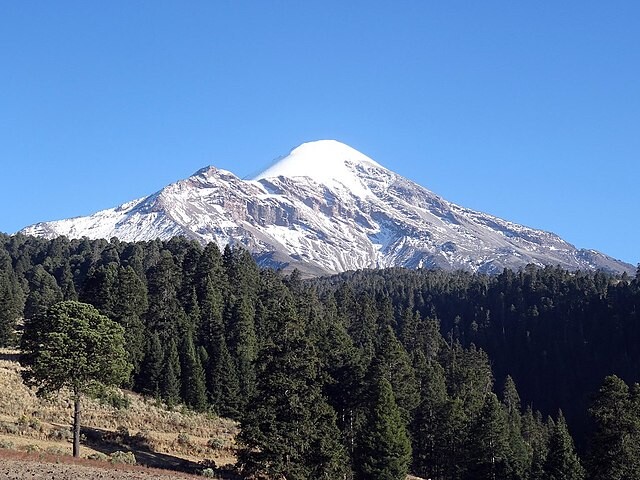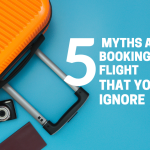Mountains demand respect in addition to requesting it. It's amazing we get any windows into their world at all given the feet of snow, hurricane-force winds, low oxygen levels, and their own weather. While some invite us in, others still need to be climbed.
Here are a few "fourteeners" — mountains higher than 14,000 feet (4,267 metres) — to get you started on your first significant climb if you are physically fit but are new to mountaineering. These summit attempts shouldn't be made without taking the necessary safety measures. Although novice climbers can reach the top of each of these mountains, we advise hiring a qualified guide instead.
The top ten mountains for beginner climbers are listed below.
↬Mount Whitney, California: 14,505ft

 It is the highest peak in the US mainland, but you must hike to the top. You must take part in a raffle to obtain a permit in order to hike the trail. Whitney is a winner, though, for anyone looking to start climbing and improve their abilities.
It is the highest peak in the US mainland, but you must hike to the top. You must take part in a raffle to obtain a permit in order to hike the trail. Whitney is a winner, though, for anyone looking to start climbing and improve their abilities.
▸What to bring
Water. Surprisingly, the mountain has no water. During the entire ascent, you are exposed. Climbers face a serious risk of dehydration in addition to altitude sickness.
↬Pikes Peak, Colorado: 14,115ft
 There are no easier or more accessible mountains to climb than Colorado's Pikes Peak. You ascend 7400 feet on a 13.5-mile trail to the summit. When you arrive, a road, a train, and 500,000 additional visitors per year greet you. No other 14er has the comfort and margin of safety that Pikes does.
There are no easier or more accessible mountains to climb than Colorado's Pikes Peak. You ascend 7400 feet on a 13.5-mile trail to the summit. When you arrive, a road, a train, and 500,000 additional visitors per year greet you. No other 14er has the comfort and margin of safety that Pikes does.
▸What to bring
A water filter Water is available along the trail, but you should sanitise it before drinking it. Dehydration is fatal at altitude once more.
↬Mount Kilimanjaro, Tanzania: 19,341ft
 Some people might be surprised that this mountain, which is approaching the 20,000-foot (6,000-meter) mark, is even on our list. You can relax knowing that the hardest part of this mountain is the altitude. You can hike Mount Kilimanjaro, which is in northeast Tanzania, without ever stepping on ice or snow. A guide is necessary, and it could take you up to a week to reach the summit, but for many climbers, crossing off the achievement of scaling Africa's highest peak is a life goal.
Some people might be surprised that this mountain, which is approaching the 20,000-foot (6,000-meter) mark, is even on our list. You can relax knowing that the hardest part of this mountain is the altitude. You can hike Mount Kilimanjaro, which is in northeast Tanzania, without ever stepping on ice or snow. A guide is necessary, and it could take you up to a week to reach the summit, but for many climbers, crossing off the achievement of scaling Africa's highest peak is a life goal.
▸What to bring
your wallet. You'll need to spend a fortune to climb Kilimanjaro; depending on the guide, average climb costs range from $2000 to $6000. However, the money supports the knowledgeable guides and Kilimanjaro National Park, which preserves the mountain and its wildlife.
↬Mount Kenya, Kenya: 17,057ft
 Why not cross the border and climb Africa's second-highest peak after climbing Kilimanjaro? Although Mount Kenya, which soars to more than 17,000 feet, is lower than Kilimanjaro, it is more difficult. You have a few options for ascending this massif, so you decide which one to take. The views are worth the effort once you arrive.
Why not cross the border and climb Africa's second-highest peak after climbing Kilimanjaro? Although Mount Kenya, which soars to more than 17,000 feet, is lower than Kilimanjaro, it is more difficult. You have a few options for ascending this massif, so you decide which one to take. The views are worth the effort once you arrive.
▸What to bring
camping gear Whichever route you choose, it will involve a multi-day ascent. A tent, sleeping bag, and pad are all required for this summit along with the necessary permits and guides.
↬Mount Elbrus, Russia: 18,510ft
 Europe's highest peak, which is located deep within the Caucasus region of southwestern Russia, is waiting for the aspirant mountaineer to scale her icy face. Any climber, beginner or expert, will find this mountain's thin air challenging because it soars to over 18,000 feet (5500 metres).
Europe's highest peak, which is located deep within the Caucasus region of southwestern Russia, is waiting for the aspirant mountaineer to scale her icy face. Any climber, beginner or expert, will find this mountain's thin air challenging because it soars to over 18,000 feet (5500 metres).
▸What to bring
Ice ax, crampons and physical fitness. This mountain demands strength and stamina to achieve the summit and will remind you if you are ready or not.
↬Pico de Orizaba, Mexico: 18,490ft

 Pico de Orizaba, the tallest mountain in Mexico, is a stunningly shaped cone that pierces the sky. Despite the relatively easy climb, it is strongly advised to have a guide and plenty of time to reach the summit. Stay at the hut, get up at the crack of dawn, and climb the third-highest peak in North America.
Pico de Orizaba, the tallest mountain in Mexico, is a stunningly shaped cone that pierces the sky. Despite the relatively easy climb, it is strongly advised to have a guide and plenty of time to reach the summit. Stay at the hut, get up at the crack of dawn, and climb the third-highest peak in North America.
▸What to bring
Physical stamina and a week or two’s worth of acclimatization training. It is highly recommended you do a few hikes up to altitude in training for the summit.
↬Volcan Cotopaxi, Ecuador: 19,347ft

 It is incredible that a mountain rising above 19,000 feet exists at that latitude when you are standing on the equator. A dormant volcano with a perfectly shaped cone to scale is called Cotopaxi. This difficult summit will put your lungs to the test as you make your way to the top because it requires some mixed climbing that calls for the use of ice axes and crampons.
It is incredible that a mountain rising above 19,000 feet exists at that latitude when you are standing on the equator. A dormant volcano with a perfectly shaped cone to scale is called Cotopaxi. This difficult summit will put your lungs to the test as you make your way to the top because it requires some mixed climbing that calls for the use of ice axes and crampons.
▸What to bring
Some experience and a camera. A guide is required to attempt a summit, but with economical and experienced adventure packages, the only thing you’ll have to worry about are the photos you take from the summit.
↬Mount Rainier, Washington: 14,410ft
 As an iconic location, Mount Rainier has its own National Park. Although it only reaches a height of a little over 14,000 feet, this active volcano presents more difficulties than many of the other peaks on the list. Nevertheless, the climb is nothing short of spectacular thanks to all the preparation.
As an iconic location, Mount Rainier has its own National Park. Although it only reaches a height of a little over 14,000 feet, this active volcano presents more difficulties than many of the other peaks on the list. Nevertheless, the climb is nothing short of spectacular thanks to all the preparation.
What to bring
A portable stove. You must melt snow for your drinking water, so a Jetboil is of utmost importance when climbing Rainier.
↬Mont Blanc, France: 15,781ft
 The Mont Blanc Massif, which is Europe's second-highest peak, is a well-known landmark. Even though the ascent to the summit is not simple, most people who are in good physical condition can complete a guided trip up. Plan ahead because there are currently regulations in place to prevent mountain overcrowding.
The Mont Blanc Massif, which is Europe's second-highest peak, is a well-known landmark. Even though the ascent to the summit is not simple, most people who are in good physical condition can complete a guided trip up. Plan ahead because there are currently regulations in place to prevent mountain overcrowding.
▸What to bring
You will need a backpack of gear ranging from trekking shoes to ice axes, rope and crampons. This mountain will demand every type of climbing.
↬Island Peak, Nepal: 20,305ft
 Island Peak, which has been called "the easiest 20,000-foot mountain in the world," will undoubtedly put your lung capacity to the test. You won't just be walking up its face; you'll still need to use ice axes and crampons. However, almost anyone who wants to and acclimatises properly can climb it.
Island Peak, which has been called "the easiest 20,000-foot mountain in the world," will undoubtedly put your lung capacity to the test. You won't just be walking up its face; you'll still need to use ice axes and crampons. However, almost anyone who wants to and acclimatises properly can climb it.
▸What to bring
Any remedy for altitude sickness. These could be used for every climb on the list, but at none other than Island Peak is it absolutely necessary.









